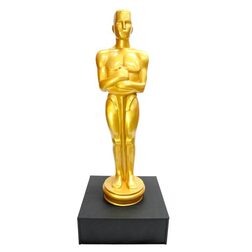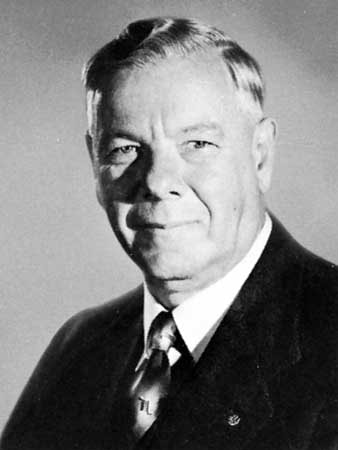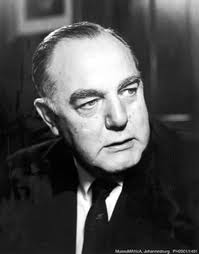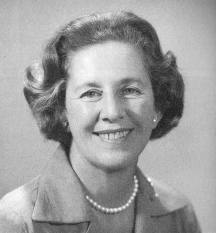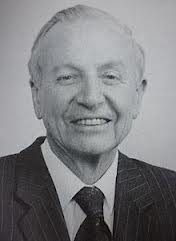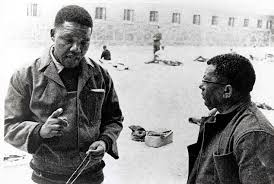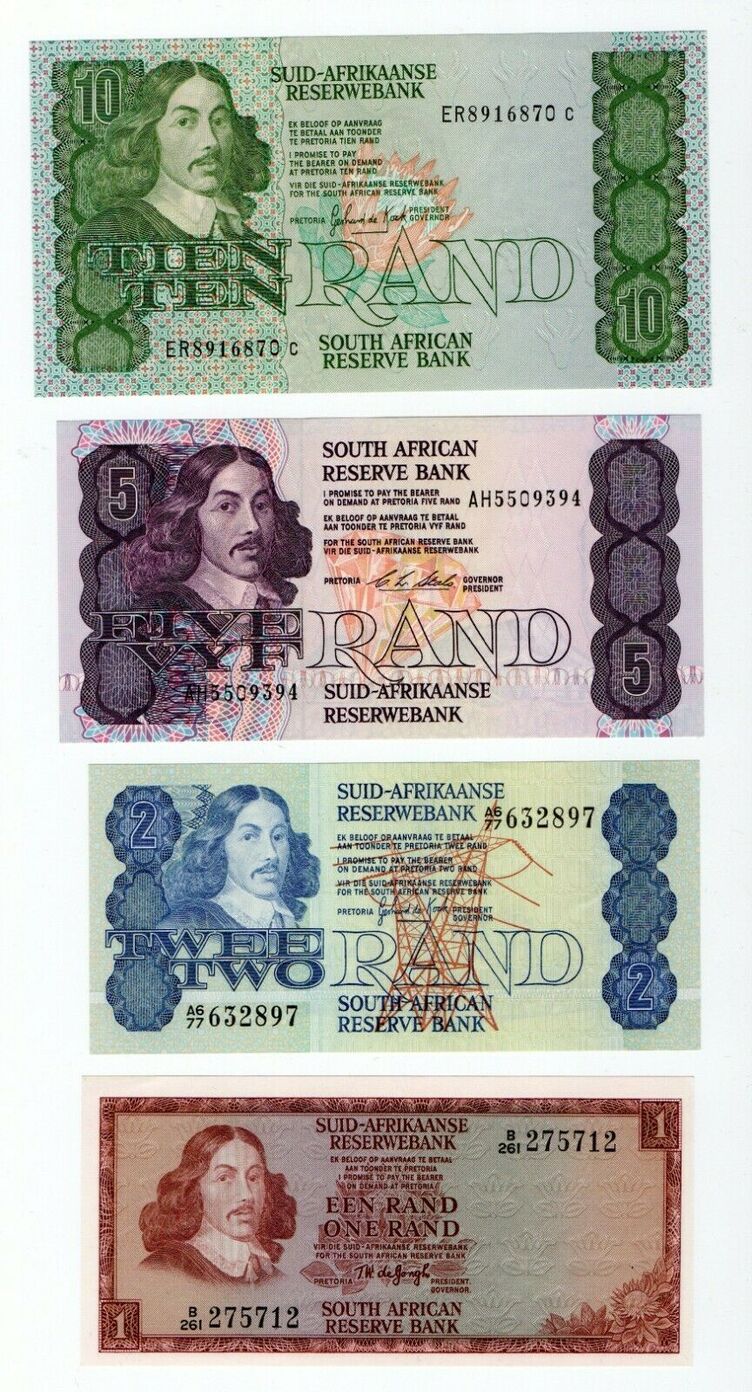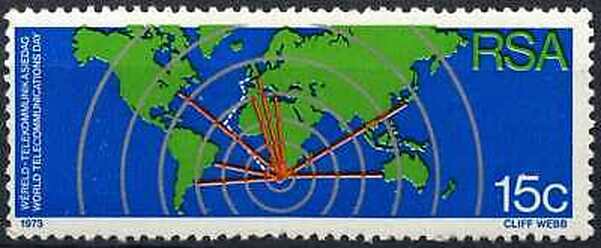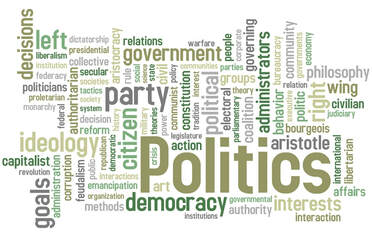
What happened in South Africa in 1973?
Thabo Mbeki is in Botswana having talks with the Botswana Government about the opening of the African National Congress Offices.
January - February, Durban is swept by a wave of spontaneous strikes by Black workers. This prompts reserved acknowledgment from industry, and attracts worldwide publicity. Though none of the Black organisations can claim credit for the strikes, nonetheless the strikes demonstrate the potential for successful industrial action. Many Black radicals consider the possibility of forming a student-worker alliance. The Black Peoples Convention (BPC) give their support to the Durban strikers.
1 January, Gazankulu: Education Act No 7:
9 January, Workers at the Coronation Brick & Tile factory in Durban down tools and demand first R20, and then R30 per week. This strike sparks off a chain of strikes throughout Durban which, by early February, see almost 30 000 workers on strike throughout Durban.
Students of the Wages Commission are seen in some quarters, particularly by government, to have been agitators. Subsequent interviews with workers play down the role of the Wages Commission in the 73 strikes, citing their disgusting low wages as the main reason for the strikes.
12 January, A notice providing for compulsory education for Indians is gazetted.
18 January, The Kwazulu government issues a document signed by all six Executive Councillors inviting the South African government to test its consolidation plan for the homeland by holding a referendum among all race groups in Natal and Kwazulu.
19 January, Prime Minister Vorster, confirms that the government has not been Earl consulted over Rhodesia’s closure of its border with Zambia, but that the government will assist in opposing terrorism.
23 January, The Prime Minister announces that a first-ever multi-racial commission will investigate the political and socio-economic future of the Coloured community.
24 January, Premier Vorster, decrees that in the future the ‘homelands’ will be allowed to accept direct foreign financial aid.
25 January, South Africa Signs a treaty with the Federal Republic of Germany on double taxation.
26 January, The Federation of International Football Associations (FIFA) announced, after a postal ballot of the executive committee, to allow foreign teams to go to South Africa to participate in the South African Games in March.
27 January, Chief Matanzima of the Transkei suggests that a federation between blacks and whites would save South Africa from destruction.
February - April, The government’s reaction to the strikes is a revision of wage levels for unskilled workers; training facilities for blacks; an improvement of communication between black labour and employers.
Widespread industrial unrest among black workers is experienced. The underlying cause is identified as the fact that black workers have assumed increasing importance in the country’s economy, yet they are denied the right to strike or bargain collectively and their trade union is not officially recognized..
February, Rick Turner (UND Lecturer), Neville Curtis, Halton Cheadle, Paula Ensor, David Hemson and David Davis are all served with banning orders. There is a subsequent slump in both Wages Commission and union activities.
1 February, The government grants internal self-government to two further ‘homelands’, namely to Venda and Gazankulu territories.
11 February, The Federation of International Football Associations (FIFA) withdraws the special permission it had given to amateur football teams to take part in the South African Games to be held in Pretoria in March-April 1973, when it becomes clear that FASA is planning separate teams for different ethnic groups. FIFA had temporarily lifted suspension on the Football Association of South Africa (FASA) on the understanding that the Games would be multi-racial.
12 February, South Africa Signs multilateral treaty and operating agreement relating to the Intelsat.
19 February, Unrest among black workers over wage improvement continues. Police arrest 244 African workers, of whom 169 are subsequently charged.
20 February, The Minister of Labour announces instructions to the Wage Board to revise certain determinations applying to unskilled labourers in major centres. Minimum wages rise by over thirty per cent.
21 February, The first general elections to the Ciskei’s Legislative Assembly are held in the territory’s nine districts. There are no political parties; the candidates are elected to the twenty elective seats in their individual capacity, the remaining thirty seats are filled by Chiefs appointed ex officio.
27 February, The Commission of Inquiry, appointed by the Prime Minister, to investigate the activities of four organisations, among them the National Union of South African Students (NUSAS) submits a detailed interim report on NUSAS to the Assembly, recommending action against eight NUSAS leaders. The Commission, under the chairmanship of AL. Schlebush, comprises five other National Party MPs and four opposition United Party MPs. The approval of the report by its four UP members is widely criticized.
On the same day banning orders under the Suppression of Communism Act of 1950 are served on eight NUSAS leaders. On the following day violent student clashes take place in Johannesburg.
March, The Portuguese Foreign Minister, Dr. Rul Patricio, pays a five-day official visit to South Africa. He declares, on 6 March 1973, that there are no plans for a military alliance between Portugal, South Africa and Rhodesia.
March, Initially the government views the Black Consciousness movement as apparently supportive of their 'separate development' ideology, and thus tolerates them. Later clamp-downs see bannings of South African Students' Organisation (SASO) and Black People’s Convention (BPC) leaders Steve Biko, Barney Pityana and six others.
2 March, It is announced in Johannesburg that restriction orders have been issued against six leaders of the South African Students Organisation (SASO) and against two men closely associated with the Black People’s Convention (BPC).
3 March, South Africa Signs multilateral treaty on international trade in endangered species of wild flora and fauna.
4 March, In the British House of Commons the Trade and Industry Sub-Committee of the Select Committee on Expenditure proposes an inquiry ‘To investigate how far wages and conditions of employment of African workers employed by British companies in South Africa represent a factor affecting investment prospects, export performance, and the reputation abroad of British industry’. The proposal is accepted.
8 March, The Minister of Justice defends the banning orders on eight black leaders on the grounds that he is preventing acts of terrorism worse than any previously experienced. The opposition queries why, in such a case, the leaders are not taken to court.
The Prime Minister, B.J. Vorster, officially opens the South African Navy’s R15m. Maritime Operational and Communications Headquarters at Silvermine, near Simonstown.
12 March, In the wake of strikes in Natal in February, The Guardian publishes a documented report on the low wages paid to black workers in South Africa by companies with British connections.
14 March, The Supreme Council for Sports in Africa (SCSA) asks the national Olympic committees of Belgium, Great Britain, Japan, the Netherlands and West Germany, to do everything in their power to prevent members of their respective countries from participating in the Pretoria Games from 23 March to 7 April 1973.
20 March, Sports Minister, Dr. P. Koornhof, says the government will not allow organisations inside or outside the country to disrupt the South African games.
Evidence of guerrilla training in the Soviet Union and Tanzania is given in the trial of six people, on nineteen charges under the Terrorism Act, appearing before Justice Boshoff in Pretoria.
21 March, The banning orders on NUSAS leaders are discussed by the Principals of four English language universities with the Prime Minister, who is unsympathetic. Extra-Parliamentary action to bring about change in the form of government in South Africa will not be tolerated.
Black Laws Amendment Act No 7:
Designed to speed up the planning for partial consolidation of homelands. The 1927 Black Administration Act was amended so that ‘a removal order might be served on a Bantu Community as well as on a tribe or portion thereof’ (Horrell 1978: 205). If a tribe refused to move, and Parliament approved the plan, the tribe was unable to appeal to Parliament.
Repealed by the Abolition of Influx Control Act No 68 of 1986.
27 March, A major detailed Administration statement is made by the United States Assistant Secretary of State for African Affairs, David Newsom, to the African Sub-Committee of the House of Representatives, chaired by Congressman Charles Diggs concerning American business involvement in South Africa. It stresses that peaceful change in South Africa can be fostered if American firms promote better conditions for blacks.
29 March, The British government publishes in Trade and Industry, guidelines for British companies operating in South Africa.
3 April, Chief Kaiser Matanzima (Transkei) calls for a federation of white and black states in South Africa. His party stands for a policy of separation of races on an equal and parallel basis, rejecting racial discrimination and white dominance.
9 April, The International Commission of Jurists condemns the bannings of black leaders.
The New Zealand Prime Minister announces that the invitation to an all-white South African rugby team had to be withdrawn because of its racial selection.
International Conference of Experts for Support of Victims of Colonialism and Apartheid in Southern Africa, Oslo.
10 April, Minister of Defence, P.W. Botha, defines South Africa’s defence policy in a White Paper tabled in the House of Assembly. While primarily defensive, the policy must also include a significant retaliatory capability.
11 April, Forty members are elected to Lebowa’s Legislative Assembly, the remaining sixty seats being allocated to nominated chiefs. Cedric Phatudi becomes is Chief Minister.
14 April, The Bophuthatswana government rejects the South African government’s consolidation proposals and, in return, claims large portions of North Western and Western Transvaal and sizeable areas of the Northern Cape and the Free State.
Signs multilateral treaty on the issue of telegraph and telephone regulations.
20 April, The South African Police Force stationed in the Caprivi Strip, bordering Zambia, suffer casualties in clashes with ‘terrorists’.
24 April, The ambush and killing of policemen by Zambian based terrorists is reported from the Caprivi Strip. Zambia denies that it harbours freedom fighters’.
25 April, Prime Minister Vorster, confirms in the House of Assembly that the blacks would receive all the land provided for in the 1936 Native Trust and Land Act.
The Schlebusb Commission of Inquiry issues its third interim report, focusing on the Wilgespruit Fellowship Centre, an institution stated to be working towards radical social and political change and employing procedures counter to accepted religion and religious practice. The Prime Minister gives its controlling body, the South African Council of Churches (SACC) three weeks to clear it up.
27 April, Details of the government’s final consolidation proposals for the ‘homelands’ involving land in the provinces of Natal and Transvaal are given at a press conference by the Minister of Bantu Administration and Development, M.C. Botha. They are tabled in Parliament and approved on.
29 April, The Prime Minister indicates that the ‘homelands’ will be perfectly free to form a federation among themselves, once they have achieved hill independence. However he is not prepared to share the sovereignty of the white people with any other national group.
4 May, The Minister for Bantu Administration and Development hands over the symbols of authority to the Kwazulu Legislative Authority.
12 May, A Bill prohibiting demonstrations near the Houses of Parliament in Cape Town is passed with the support of the opposition United Party.
15 May, The British Trade and Industry Sub-Committe holds eighteen public sittings; twenty eight companies give oral evidence, 100 others written evidence. Most state they have given unscheduled wage increases to black workers in the period before and during the House of Commons inquiry.
16 May, The Minister of Justice banns all protest meetings in the centre of Cape Town, following student protests. Several arrests are made.
18 May, Signs multilateral treaty on the issue of the simplification and harmonization of customs procedures.
21 May, The Bantu Labour Relations Regulation Amendment Bill is read for the first time in the House of Assembly. It creates more effective machinery for communication between employers and African workers and gives the Minister of Labour wide powers to stimulate improvements in working conditions. Africans are given a more direct role in wage negotiations.
24 May, In connection with the uranium enrichment programme, disclosed by the Prime Minister in July 1970, his announced in the House of Assembly that the government has decided to make funds available for preparatory work for establishing a full-scale prototype plant for the economic enrichment of uranium.
25 May, Final land consolidation proposals for Bophuthatswana are announced. They involve moving more than 120,000 Tswana people from their present lands.
The Minister of Sport and Recreation, Dr. P.G.J. Koornhof, announces in the House of Assembly that the Government had given approval for the staging in 1974 of an open national soccer tournament in which the different South African nations can participate on a multinational basis. This is that a South African representative white team, a South African representative Coloured team, a South African representative Indian team and a South African representative Zulu, Xhosa or any other Bantu (sic) national team can compete in the tournament.
A Whites-only team beats a Blacks-only team twice in the multi-national South African Games (4-0; 3-1) at the Rand Stadium, Johannesburg.
26 May, A comprehensive policy statement on South Africa’s new multi-national sports concessions is made by Sports Minister Dr. P. Koornhof in the House of Assembly. Separate participation will be maintained at club, provincial and national levels. Mixed competition will be only at international level.
6 June, Resettlement of 363,000 Africans is expected to result. Gatsha Buthelezi protests over the limited concessions and threatens non-cooperation.
15 June, International Trade Union Conference against Apartheid - organised by the Workers' Group of the ILO Governing Body, in cooperation with the UN Special Committee against Apartheid, at Palais des Nations, Geneva.
20 June, Prison sentences ranging from five to fifteen years are imposed by Justice W.G. Boshoff in Pretoria on six defendants convicted under the Terrorism Act. They are found guilty of various charges including conspiring in South Africa, the Soviet Union, Somalia and Britian with the ANC, to overthrow the South African government by force and preparing for violent revolution.
The Minister of Defence denies that South African troops are supporting Portuguese armed forces in Mozambique, as alleged by FREL1MO.
July - September, ‘Homeland’ leaders Chief Buthelezi, Professor Ntsanwisi, and TM. Molahlawa warn the South African government of worsening race relations.
4 July, The Bantu Labour Regulations Amendment Bill becomes operative. The conditions under which Africans - for the first time - have the legal right to strike, the procedures to be followed, and the exclusion from it of certain essential services categories of workers are laid down.
20 July, The Minister of Coloured Affairs announces that the government has decided to appoint a judicial commission to investigate student grievances and conduct at the University of the Western Cape, closed between 11 June and 15 July 1973, following various demands and protests.
28 July, The Deputy Minister of Bantu Administration and Education, Punt Janson, invites guidance in humanizing the pass laws and influx control measures by which African mobility is regulated, in the interests of the communities.
30 July, The former Minister of the Interior, Theo Gerdener, announces details of his scheme for a new political organisation whose aim will be to work for two separate states in South Africa, one for Africans and the other for White, Indian and Coloured peoples with equality for all.
August, Banning orders continue. Passports are refused, or withdrawn.
1 August, A High Court is established in Umtata, capital of the Transkei. The first Chief Justice sworn in is a white South African.
7 August, Students strike at the University of Fort Hare. The Students Organisation (SASO) is held responsible for the agitation. Further violence erupts on the campus on 28 August 1973.
15 August, Elections are held in Venda. Traditionalist Chief Patrick R. Mphephu is returned to power despite electoral victory for the opposition Vendaland Independent People’s Party, additional seats being filled by nominated headmen.
24 August, South Africa Signs treaty with Lesotho relating to the establishment of an office for a Lesotho government labour representative in South Africa.
South Africa Signs boundary treaty with Botswana.
Legal Aid Act No 2:
Provided legal aid for blacks, which was absent in the South African setting.
25 August, The Prime Minister warns the opposition parties, the United Party and Progressive Party, that his government may have to end interference by whites in the political affairs of Africans and vice-versa. He is particularly opposed to representatives of black and Coloured communities being invited to speak at their congresses which can only heighten friction between racial groups.
29 August, Signs treaty with Brazil regarding the exemption from customs duties to consuls and consulates of both states.
September, The Premier of West German Schleswig-Holstein says during a visit to South Africa that more German entrepreneurs should be attracted to the ‘homelands’.
11 September, Eleven rioting miners are shot by police and twenty-seven injured at the Western Deep Levels mine, Carltonville in a confrontation arising from a pay dispute. The incident arouses international concern.
13 September, Chief Gatsha Buthelezi, the Chief Councillor, announces that the South African government has agreed that members of the Kwazulu Executive Council should be allowed to possess firearms.
20 September, The United States House of Representatives Judiciary Sub-Committee opens an inquiry into the South African operations of 320 American firms, with a view to determining whether they follow fair employment practices.
24 September, Gazankulu: Social Pensions Act No 7:
25 September, The New Zealand government announces that it terminates all tariff preferences previous granted to South Africa, as from 1 January 1974.
October, A plan is launched by the government and leading blacks, for the formation of twenty-two councils to represent the country’s 6,000,000 urban Africans.
3 October, Prime Minister Vorster indicates that there is nothing to prevent employers taking the necessary steps to bring about improvements in the productive use of black labour. The government will not obstruct changes in the country’s traditional work patterns.
5 October, The Minister of Labour exercises his power under the Bantu Labour Relations Regulation Bill to order minimum wage increases of between fifty and ninety per cent for a large proportion of the more than 100,000 Africans employed in the civil engineering and road-making industries in main urban areas.
The United Nations General Assembly rejects South Africa’s credentials. The Assembly President rules, however, that the measure does not affect the delegations right to participate, and the Prime Minister affirms South Africa’s intention to remain in the United Nations despite mounting opposition.
A State Presidential Proclamation, widening powers of the Group Areas Act, is published in a bid to prevent multi-racial matches at Pietermaritzburg’s Aurora Cricket Club.
7 October, A delegation of British Trade Union leaders carry out an intensive programme of visits and talks, investigating trade union conditions and meeting the Prime Minister and several other government ministers. Their leader, Victor Feather, President of the European Trade Union Confederation, outlines a six point plan for industrial prosperity and black workers advancement. The government rejects it.
12 October, The Minister of Labour says that the government will neither abolish job reservation nor recognize black trade unions.
16 October, Signs treaty with Spain for the prevention of double taxation on income derived from the operation of ships or aircraft in international traffic.
16 October, Elections are held in Gazankulu. Professor Hudson Ntsanwisi is unanimously re-elected leader of the Gazankulu Legislative Assembly.
19 October, KwaZulu: Medium of Instruction and Language Act No 5:
21 October, It is reported that the government has banned twenty black leaders of black organisations, including the South African Students’ Organisation (SASO), the Black People’s Convention (BPC) the Black Community Programme (BCP), the Black Allied Workers’ Union and the Black Workers’ Project. Members of the South African Black Scholars’ Association (SABSA) are interrogated security police.
24 October, In the elections the Transkei National Independence Party wins twenty-five seats, the Democratic Party ten, Independents eight. Another sixty-four Assembly seats are filled by chiefs appointed ex officio by the government.
27 October, The Carltonville inquests exonerates the police from any blame for the shootings at the Western Deep Levels on 11 September 1973, in which eleven black miners were killed and which caused an international outcry.
8 November, A meeting convened by Chief Lucas Mangope, Chief Minister of Bophuthatswana, held in Umtata in camera and attended by eight ‘homeland’ leaders to work out a common approach to the. government, lay emphasis on the concept of one black nation. Resolutions are passed for the establishment of a black bank, abolition of influx control and consolidation of ‘homelands’ into single units.
9 November, At its Biennial Congress in Bloemfontein the United Party adopts a new six-point declaration of principles, and ratifies a new federal plan committed to a federal constitution.
The Progressive Party supports the idea of a federation of autonomous states in Southern Africa.
16 November, Dr. Beyers Naudé, Director of the Christian Institute is found guilty by a Pretoria regional court of refusing to testify before the Schlebusch Commission, because its hearings were held in secret.
17 November, The Democratic Party officially comes into being at a one-day conference in Johannesburg attended by some 200 delegates from the four provinces. Theo Gerdener is unanimously elected leader of the party.
28 November, An Arab oil embargo against South Africa, brings the prospects of rationing and the extension of conservation measures.
30 November, The United Nations General Assembly adopts, by ninety one votes to four, the Convention on the Suppression and Punishment of the Crime of Apartheid. To become international law its ratification by twenty countries is still required.
International Convention on the Suppression and Punishment of the Crime of Apartheid approved by the General Assembly [Resolution 3068(XXVIII)].
4 December, Following the placing of an embargo on the supply of oil to South Africa from Arab countries, the Prime Minister announces restricted trading hours, but states that petrol rationing is not as yet being introduced.
7 December, Further bannings are gazetted, including that of the former leader of the South African Indian Congress, Yusuf Cachalia who has already spent twenty years under restriction.
11 December, Land consolidation proposals for the Transkei and Ciskei are announced, involving black acquisition of Port St Johns and Indwe.
14 December, The United Nations adopts a resolution declaring that the South African government has no right to represent the people of that country and that representation should instead be vested in the African national liberation movements.
The General Assembly declared that the South African regime has “no right to represent the people of South Africa“ and that the liberation movements recognised by the OAU are “the authentic representatives of the overwhelming majority of the South African people“. [Resolution 3151 G (XXVIII)]
15 December, The British Trade Union Congress (TUC) publishes a report on black labour conditions. Among the major recommendations it advocates is the organisation of black workers into trade unions.
19 December, South Africa signs International Sugar Agreement.
24 December, Signs agreement with Botswana relating to the establishment of a Botswana government labour representative in South Africa.
The United Nations General Assembly (under the chairpersonship of the Algerian Foreign Minister) refuses to recognise the credentials of the South African delegation, a significant victory for the ANC.
Fietas, Johannesburg: The Oriental Plaza is established, but stands virtually empty until 1976 when unwilling traders are forcibly removed from their shops in Pageview.
The performance of Black drama and music by mushrooming township cultural groups becomes a significant factor in the dispersal of Black Consciousness philosophy.
QwaQwa proclaimed a self-governing territory.
Prisons Act No 6: Set out prison services in Transkei.
Lebowa: Education Act No 6:
Baleka Kgositsile is active in the Black Consciousness Movement and the ANC underground.
Mamphela Ramphele is charged under the Suppression of Communism Act for being in possession of banned literature.
When 11 and in Std. 3 (Grade 5), Robert McBride's father makes him read “Coloured: A profile of 2 million South Africans“ by Al J. Venter, an unusually progressive book for its time. The book draws attention to the contribution of Coloured people in the struggle against apartheid, some of whom went into exile and chose violent resistance. It introduces McBride to Coloured political activists such as James April, Don Mattera, Jakes Gerwel, Basil February and his own uncle, Rev. Clive McBride. Discussions that Robert has with his father around these issues create a lasting impression in him.
.....and this is what happened in the rest of the world:
Price of gold in 1973 $106 and now 3/2022 $1,929
Dow Jones index in 1973 high 1,051; low 788 and now 3/2022 34,358 (high 36,952; low 32,071)
Dow Jones index in 1973 high 1,051; low 788 and now 3/2022 34,358 (high 36,952; low 32,071)
Billboard magazine's Top Hot 40 songs of 1973
1 "Tie a Yellow Ribbon Round the Ole Oak Tree" Tony Orlando and Dawn
2 "Bad, Bad Leroy Brown" Jim Croce
3 "Killing Me Softly with His Song" Roberta Flack
4 "Let's Get It On" Marvin Gaye
5 "My Love" Paul McCartney & Wings
6 "Why Me" Kris Kristofferson
7 "Crocodile Rock" Elton John
8 "Will It Go Round in Circles" Billy Preston
9 "You're So Vain" Carly Simon
10 "Touch Me in the Morning" Diana Ross
11 "The Night the Lights Went Out in Georgia" Vicki Lawrence
12 "Playground in My Mind" Clint Holmes
13 "Brother Louie" Stories
14 "Delta Dawn" Helen Reddy
15 "Me and Mrs. Jones" Billy Paul
16 "Frankenstein" The Edgar Winter Group
17 "Drift Away" Dobie Gray
18 "Little Willy" Sweet
19 "You Are the Sunshine of My Life" Stevie Wonder
20 "Half-Breed" Cher
21 "That Lady" The Isley Brothers
22 "Pillow Talk" Sylvia
23 "We're an American Band" Grand Funk Railroad
24 "Right Place Wrong Time" Dr. John
25 "Wildflower" Skylark
26 "Superstition" Stevie Wonder
27 "Loves Me Like a Rock" Paul Simon
28 "The Morning After" Maureen McGovern
29 "Rocky Mountain High" John Denver
30 "Stuck in the Middle with You" Stealers Wheel
31 "Shambala" Three Dog Night
32 "Love Train" The O'Jays
33 "I'm Gonna Love You Just a Little More Baby" Barry White
34 "Say, Has Anybody Seen My Sweet Gypsy Rose" Tony Orlando and Dawn
35 "Keep on Truckin'" Eddie Kendricks
36 "Danny's Song" Anne Murray
37 "Dancing in the Moonlight" King Harvest
38 "Monster Mash" Bobby 'Boris' Pickett
39 "Natural High" Bloodstone
40 "Diamond Girl" Seals and Crofts
1 "Tie a Yellow Ribbon Round the Ole Oak Tree" Tony Orlando and Dawn
2 "Bad, Bad Leroy Brown" Jim Croce
3 "Killing Me Softly with His Song" Roberta Flack
4 "Let's Get It On" Marvin Gaye
5 "My Love" Paul McCartney & Wings
6 "Why Me" Kris Kristofferson
7 "Crocodile Rock" Elton John
8 "Will It Go Round in Circles" Billy Preston
9 "You're So Vain" Carly Simon
10 "Touch Me in the Morning" Diana Ross
11 "The Night the Lights Went Out in Georgia" Vicki Lawrence
12 "Playground in My Mind" Clint Holmes
13 "Brother Louie" Stories
14 "Delta Dawn" Helen Reddy
15 "Me and Mrs. Jones" Billy Paul
16 "Frankenstein" The Edgar Winter Group
17 "Drift Away" Dobie Gray
18 "Little Willy" Sweet
19 "You Are the Sunshine of My Life" Stevie Wonder
20 "Half-Breed" Cher
21 "That Lady" The Isley Brothers
22 "Pillow Talk" Sylvia
23 "We're an American Band" Grand Funk Railroad
24 "Right Place Wrong Time" Dr. John
25 "Wildflower" Skylark
26 "Superstition" Stevie Wonder
27 "Loves Me Like a Rock" Paul Simon
28 "The Morning After" Maureen McGovern
29 "Rocky Mountain High" John Denver
30 "Stuck in the Middle with You" Stealers Wheel
31 "Shambala" Three Dog Night
32 "Love Train" The O'Jays
33 "I'm Gonna Love You Just a Little More Baby" Barry White
34 "Say, Has Anybody Seen My Sweet Gypsy Rose" Tony Orlando and Dawn
35 "Keep on Truckin'" Eddie Kendricks
36 "Danny's Song" Anne Murray
37 "Dancing in the Moonlight" King Harvest
38 "Monster Mash" Bobby 'Boris' Pickett
39 "Natural High" Bloodstone
40 "Diamond Girl" Seals and Crofts
Top 64 LM Radio 1973

THE MOVIES
The Exorcist
American Graffiti
The Sting
Live and Let Die
The Wicker Man
Papillon
Serpico
Paper Moon
The Way We Were
The Day of the Jackal
Magnum Force
High Plains Drifter
American Graffiti
The Sting
Live and Let Die
The Wicker Man
Papillon
Serpico
Paper Moon
The Way We Were
The Day of the Jackal
Magnum Force
High Plains Drifter
THE OSCARS 1973 (these films were released in 1972)
WINNERS & NOMINEES
ACTOR
WINNER
MARLON BRANDO
The Godfather
NOMINEES
MICHAEL CAINE
Sleuth
LAURENCE OLIVIER
Sleuth
PETER O'TOOLE
The Ruling Class
PAUL WINFIELD
Sounder
ACTOR IN A SUPPORTING ROLE
WINNER
JOEL GREY
Cabaret
NOMINEES
EDDIE ALBERT
The Heartbreak Kid
JAMES CAAN
The Godfather
ROBERT DUVALL
The Godfather
AL PACINO
The Godfather
ACTRESS
WINNER
LIZA MINNELLI
Cabaret
NOMINEES
DIANA ROSS
Lady Sings the Blues
MAGGIE SMITH
Travels with My Aunt
CICELY TYSON
Sounder
LIV ULLMANN
The Emigrants
ACTRESS IN A SUPPORTING ROLE
WINNER
EILEEN HECKART
Butterflies Are Free
NOMINEES
JEANNIE BERLIN
The Heartbreak Kid
GERALDINE PAGE
Pete 'n' Tillie
SUSAN TYRRELL
Fat City
SHELLEY WINTERS
The Poseidon Adventure
DIRECTING
WINNER
CABARET
Bob Fosse
NOMINEES
DELIVERANCE
John Boorman
THE EMIGRANTS
Jan Troell
THE GODFATHER
Francis Ford Coppola
SLEUTH
Joseph L. Mankiewicz
FOREIGN LANGUAGE FILM
WINNER
THE DISCREET CHARM OF THE BOURGEOISIE
France
NOMINEES
THE DAWNS HERE ARE QUIET
Union of Soviet Socialist Republics
I LOVE YOU ROSA
Israel
MY DEAREST SEÑORITA
Spain
THE NEW LAND
Sweden
MUSIC (SONG--ORIGINAL FOR THE PICTURE)
WINNER
THE POSEIDON ADVENTURE
The Morning After in "The Poseidon Adventure" Music and Lyrics by Al Kasha and Joel Hirschhorn
BEST PICTURE
WINNER
THE GODFATHER
Albert S. Ruddy, Producer
NOMINEES
CABARET
Cy Feuer, Producer
DELIVERANCE
John Boorman, Producer
THE EMIGRANTS
Bengt Forslund, Producer
SOUNDER
Robert B. Radnitz, Producer
Since we started medical school in 1968
the following advances have been made:
the following advances have been made:
- 1968 – Controlled drug delivery – Alejandro Zaffaron
- 1969 – Balloon catheter – Thomas Fogarty
- 1969 – Cochlear implant – William House
- 1970 – Cyclosporine, the first effective immunosuppressive drug is introduced in organ transplant practice
- 1971 – Genetically modified organisms – Ananda Chakrabart
- 1971 – Magnetic resonance imaging – Raymond Vahan Damadian
- 1971 – Computed tomography (CT or CAT Scan) – Godfrey Hounsfield
- 1971 – Transdermal patches – Alejandro Zaffaroni
- 1971 – Sir Godfrey Hounsfield invents the first commercial CT scanner
- 1972 – Insulin pump Dean Kamen
- 1973 – Laser eye surgery (LASIK) – Mani Lal Bhaumik
- 1974 – Liposuction – Giorgio Fischer
- 1976 – First commercial PET scanner
- 1978 – Last fatal case of smallpox[102]
- 1979 – Antiviral drugs – George Hitchings and Gertrude Elion
- 1980 – Raymond Damadian builds first commercial MRI scanner
- 1980 – Lithotripter – Dornier Research Group
- 1980 – First vaccine for hepatitis B – Baruch Samuel Blumberg
- 1981 – Artificial skin – John F. Burke and Ioannis V Yannas
- 1981 – Bruce Reitz performs the first human heart-lung combined transplant
- 1982 – Human insulin – Eli Lilly
- Interferon cloning – Sidney Pestka
- 1985 – Automated DNA sequencer – Leroy Hood and Lloyd Smith
- 1985 – Polymerase chain reaction (PCR) – Kary Mullis
- 1985 – Surgical robot – Yik San Kwoh
- 1985 – DNA fingerprinting – Alec Jeffreys
- 1985 – Capsule endoscopy – Tarun Mullick
- 1986 – Fluoxetine HCl – Eli Lilly and Co
- 1987 – Ben Carson, leading a 70-member medical team in Germany, was the first to separate occipital craniopagus twins.
- 1987 – commercially available Statins – Merck & Co.
- 1987 – Tissue engineering – Joseph Vacanti & Robert Langer
- 1988 – Intravascular stent – Julio Palmaz
- 1988 – Laser cataract surgery – Patricia Bath
- 1989 – Pre-implantation genetic diagnosis (PGD) – Alan Handyside
- 1989 – DNA microarray – Stephen Fodor
- 1990 – Gamow bag® – Igor Gamow
- 1992 – First vaccine for hepatitis A available[103]
- 1992 – Electroactive polymers (artificial muscle) – SRI International
- 1992 – Intracytoplasmic sperm injection (ICSI) – Andre van Steirteghem
- 1996 – Dolly the Sheep cloned
- 1998 – Stem cell therapy – James Thomson
- 2000 26 June – The Human Genome Project draft was completed.
- 2001 The first telesurgery was performed by Jacques Marescaux.
- 2003 – Carlo Urbani, of Doctors without Borders alerted the World Health Organization to the threat of the SARS virus, triggering the most effective response to an epidemic in history. Urbani succumbs to the disease himself in less than a month.
- 2005 – Jean-Michel Dubernard performs the first partial face transplant.
- 2006 – First HPV vaccine approved.
- 2006 – The second rotavirus vaccine approved (first was withdrawn).
- 2007 – The visual prosthetic (bionic eye) Argus II.
- 2008 – Laurent Lantieri performs the first full face transplant.
- 2011 - first successful Uterus transplant from a deceased donor in Turkey
- 2013 – The first kidney was grown in vitro in the U.S.
- 2013 – The first human liver was grown from stem cells in Japan.
- 2014 - A 3D printer is used for first ever skull transplant.
- 2016 - The first ever artificial pancreas was created




